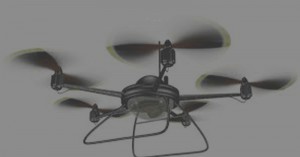
Friday, December 5, 2014, Anchorage, Alaska – Key members of the Legislature’s Unmanned Aircraft Systems (UAS) Task Force debuted a new public safety campaign today for drone operators, vendors, and purchasers.
Entitled “Alaska’s ‘Know Before You Fly’ Guidelines” the one-page safety sheet and accompanying website bring together the federal guidelines and best practices in one easy to consume place, https://alaskadrones.org.
“The excitement, along with the affordability and ease of acquiring the technology, has led to a proliferation of drones on store shelves as well as of unmanned flights,” said Rep. Shelley Hughes, R-Palmer, and the Chair of the UAS Task Force. “Many well-meaning individuals want to fly and fly safely, but they don’t realize that just because you can buy a UAS, doesn’t mean you can fly it anywhere or for any purpose.”
Hughes said that’s where the Legislature, state and federal governments, and stakeholders come together through task force meetings. “We want to help make sure prospective users know what the guidelines are – so that our skies are safe, that these seemingly harmless little drones don’t endanger others, in particular, the pilots and people on-board planes and other unmanned aircraft.”
The “Know Before You Fly” sheet outlines the basics of safe and responsible operation of a small UAS. Hughes said if you’ve purchased or are planning on purchasing a drone for yourself, a friend or a loved one – or received one as a gift – this sheet is for you. “There’s a lot of excitement and enthusiasm currently around UAS,” said Hughes. “We learned during today’s hearing that drones are going to be one of the top 10 selling items this Christmas season. So, for safe skies and the public good, it’s important for Alaska consumers to have this resource.”
The Unmanned Aircraft Systems Legislative Task Force wants to reduce the incidence of unsafe and/or unauthorized operations, and help ensure the safety of the skies for all aircraft, both manned and unmanned. “The safety guidelines were based on a joint effort of the Academy of Model Aeronautics and the Association of Unmanned Aerial Vehicle Systems International,” said Hughes. “The Task Force would like to thank AMA and UAVSI for allowing us to incorporate their work into our safety campaign.”
“The Academy of Model Aeronautics would like to congratulate the State of Alaska for its leadership role in its approach to the advent of Unmanned Aircraft Systems (UAS),” said AMA President Bob Brown. “And, the Academy looks forward to partnering with the Alaskan legislature and the state’s leadership in assuring that small unmanned aircraft of all types are operated in a safe and responsible manner while fostering the growth and vitality of this promising technology. The AMA has a long history of overseeing this country’s expansive aero-modeling community which over past 78 years has achieved an exceptional safety record, and we stand ready to assist in this important endeavor.”
The Task Force includes members from the Academy of Model Aeronautics, University of Alaska, the Alaska Aviation Safety Board, four other state agencies, and members of the public. They’ll continue to meet and prepare recommendations to the Legislature on administering the systems effectively in Alaska.
“The Academy of Model Aeronautics, AMA, a Community Based Organization established in 1936, is excited to continue its efforts to work with the State of Alaska and the Legislature as part of the Task Force, the FAA and industry leaders to provide a safe environment for all users,” said AMA State of Alaska Government Affairs Coordinator and Task Force member Steve Colligan. “AMA has provided self-regulation and self-insurance for almost 80 years and continues to adapt those to new technologies and industry changes to benefit education, recreational users, and sport hobbyists.”
A copy of House Concurrent Resolution 15, the Task Force’s enabling legislation, is available here.
Hughes said further meetings will be held during the coming first session of the 29th Alaska Legislature, and through the Task Force’s lifespan of June 30, 2017.
